Celebrate the Anacostia by visiting these six sites
The “Forgotten River” offers recreation and rich history
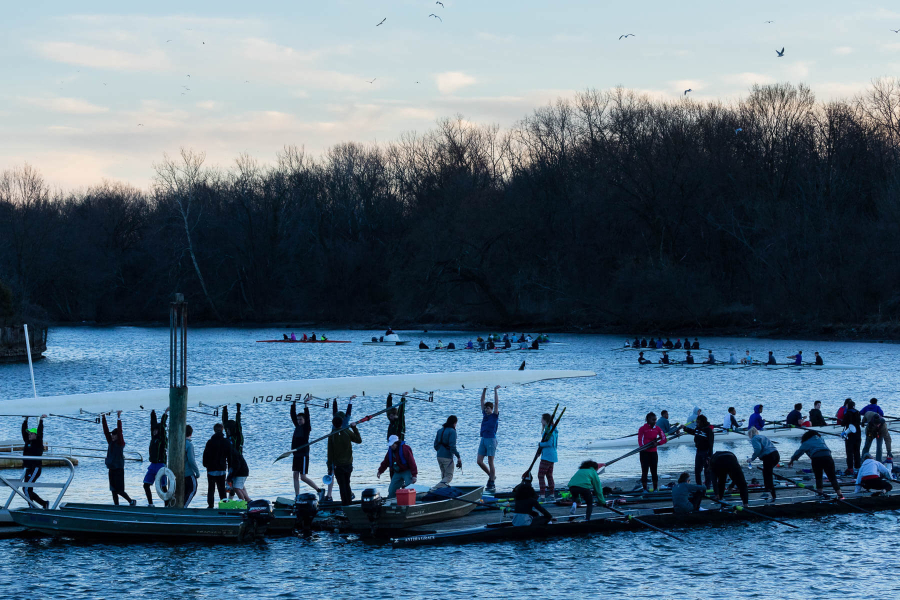
The Anacostia River used to be one of the most polluted rivers in the country. While Washington D.C.’s other major river, the Potomac, is nicknamed “the Nation’s River,” the Anacostia was known as “the Forgotten River.” Thanks to years of work, the river is much healthier and is now becoming a destination for recreation.
This year marks the 100th anniversary of the creation of Anacostia Park and has been declared the Year of the Anacostia. There are more than 1,100 acres of public space along the banks of the river, giving visitors plenty of options for ways to access it. Get outside and celebrate by visiting some of these six spots along the eight-mile Anacostia.
Bladensburg Waterfront Park
Bladensburg, Maryland is a town rich with history. Beginning in the 18th century, Bladensburg was a port town that specialized in inspecting and shipping tobacco. It was also the site of a key battle in the War of 1812, an American defeat that allowed British troops to advance to Washington, D.C., and burn the White House, Capitol and other public buildings.
The Bladensburg Waterfront Park, located right along the banks of the Anacostia, offers opportunities for canoeing or kayaking, biking, hiking, fishing and picnicking. The park is also home to the Battle of Bladensburg Visitor Center, where visitors can hear accounts of the battle and see artifacts from the encampments.
Kenilworth Park and Aquatic Gardens
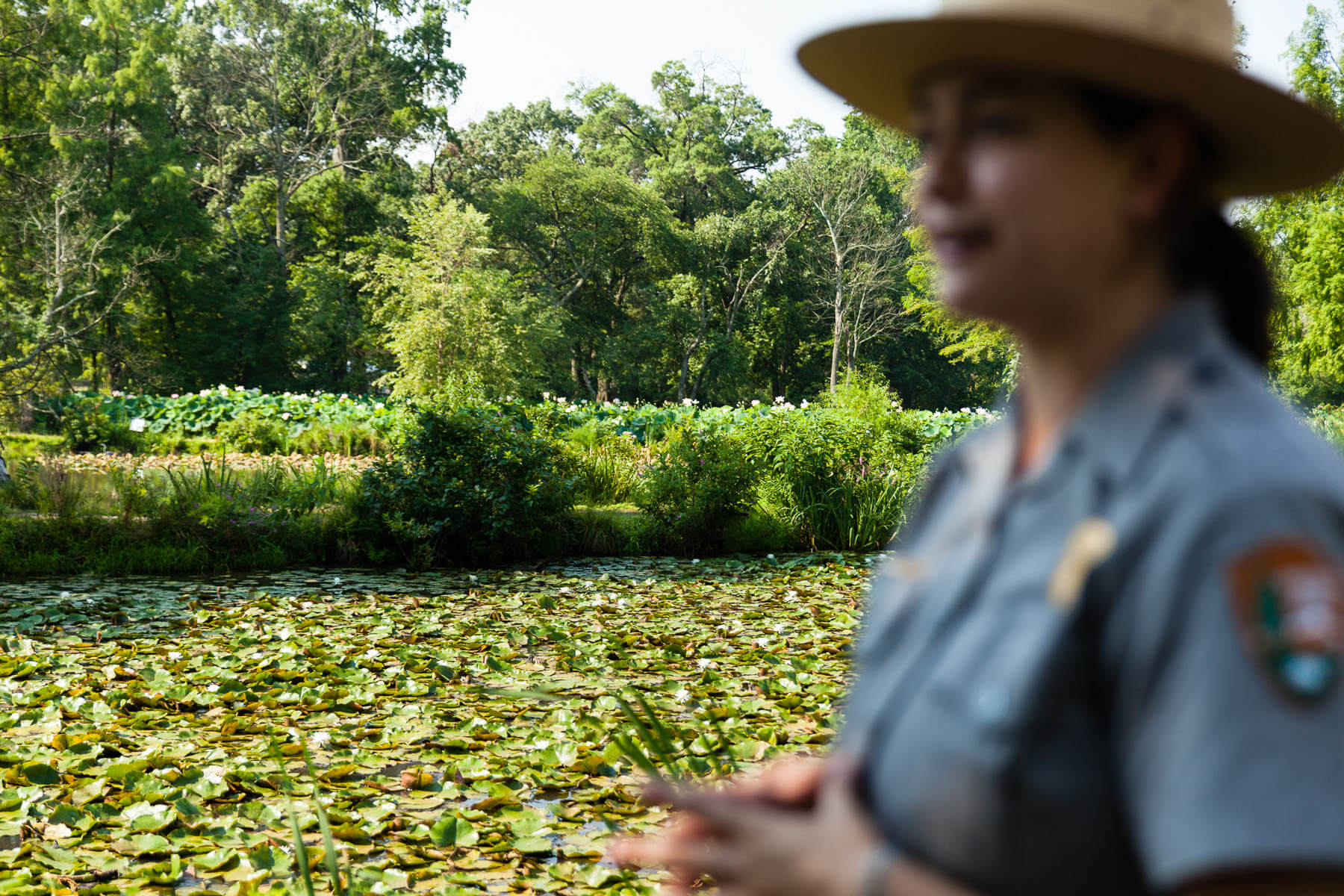 Interpretive ranger Chelcey Nordstrom leads a tour during peak lotus flower bloom at Kenilworth Park and Aquatic Gardens in Washington, D.C. (Photo by Skyler Ballard/Chesapeake Bay Program)
Interpretive ranger Chelcey Nordstrom leads a tour during peak lotus flower bloom at Kenilworth Park and Aquatic Gardens in Washington, D.C. (Photo by Skyler Ballard/Chesapeake Bay Program)
Kenilworth, located in Washington, D.C., is the only aquatic garden protected by the National Park Service. The gardens, which are free and open to the public, offer attractions throughout the year, from birding in the winter to foliage in the fall. It draws the most visitors in June and July, when the water lilies and lotus flowers bloom.
Every year, the park celebrates the blooms with the Lotus and Water Lily Festival. The festival features hands-on activities for the whole family, cultural exhibits and a chance to try lotus tea. Come early in the day to see the blooms before they close in the hot afternoon sun.
National Arboretum
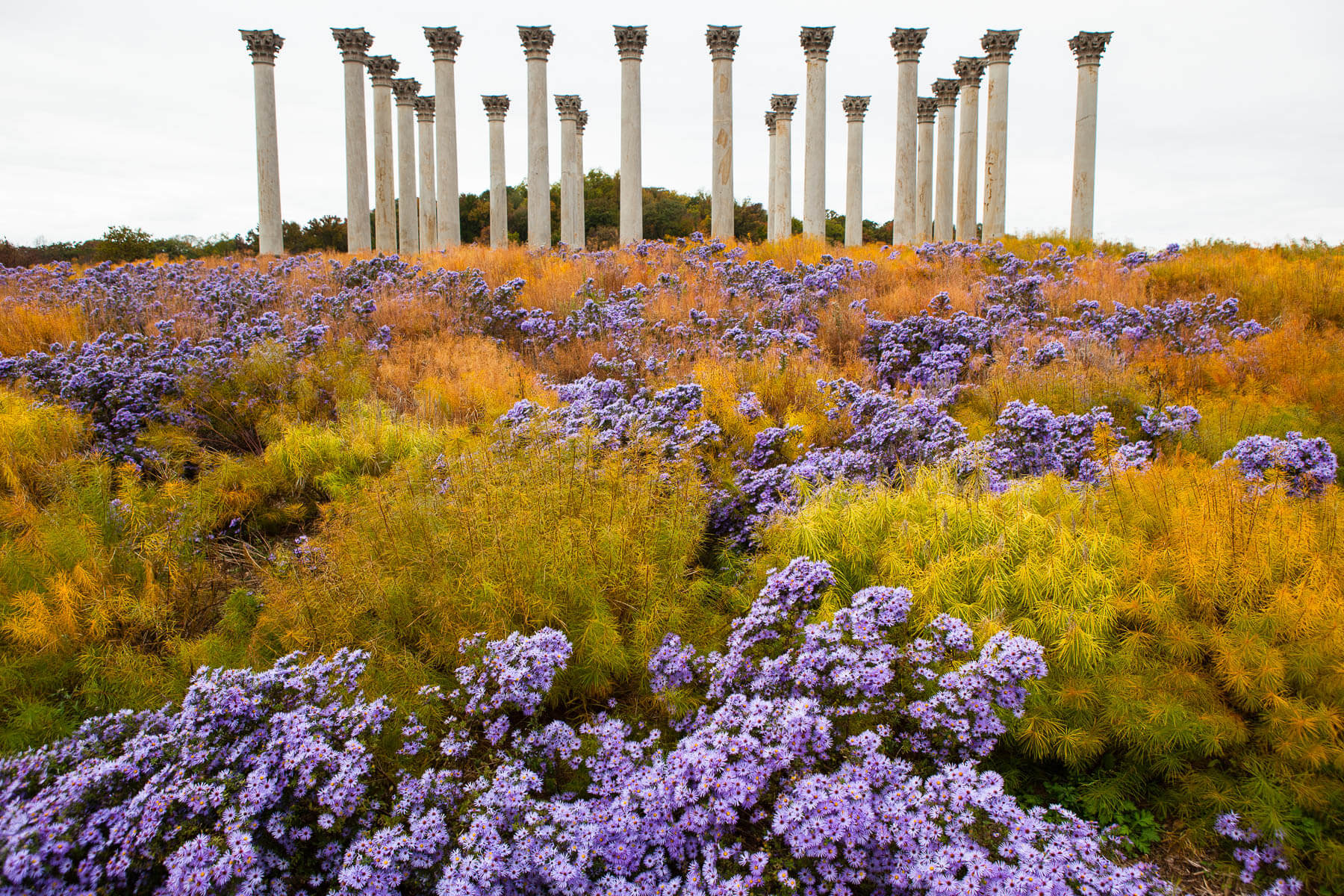 The National Capitol Columns rise above blooming fall flowers at the National Arboretum in D.C. The 22 Corinthian columns were part of the East Portico of the Capitol from 1828 until 1958. (Photo by Will Parson/Chesapeake Bay Program)
The National Capitol Columns rise above blooming fall flowers at the National Arboretum in D.C. The 22 Corinthian columns were part of the East Portico of the Capitol from 1828 until 1958. (Photo by Will Parson/Chesapeake Bay Program)
The National Arboretum is a 446-acre park located in northeast Washington, D.C. Various gardens and collections bloom at different times, making the Arboretum a great year-round destination. For example, the popular Dogwood Collection, which overlooks the Anacostia, blooms from March through early June.
The Arboretum is home to the iconic Capitol Columns, which were part of the Capitol building in 1828. An addition to the Capitol caused the columns to be removed, and they were placed in the Arboretum just over ten years ago. The Arboretum also includes the Grove of State Trees, where groups of trees from all 50 states are represented.
Another popular stop is the National Bonsai & Penjing Museum, home to approximately 150 bonsai plants. The oldest bonsai in the collection is a Japanese white pine that is close to 375 years old. The tree was part of Masaru Yamaki’s collection, which was housed just two miles away from where the atomic bomb was dropped on Hiroshima. Fortunately, the Yamaki family and their bonsai collection survived the explosion.
Kingman Island and Heritage Island
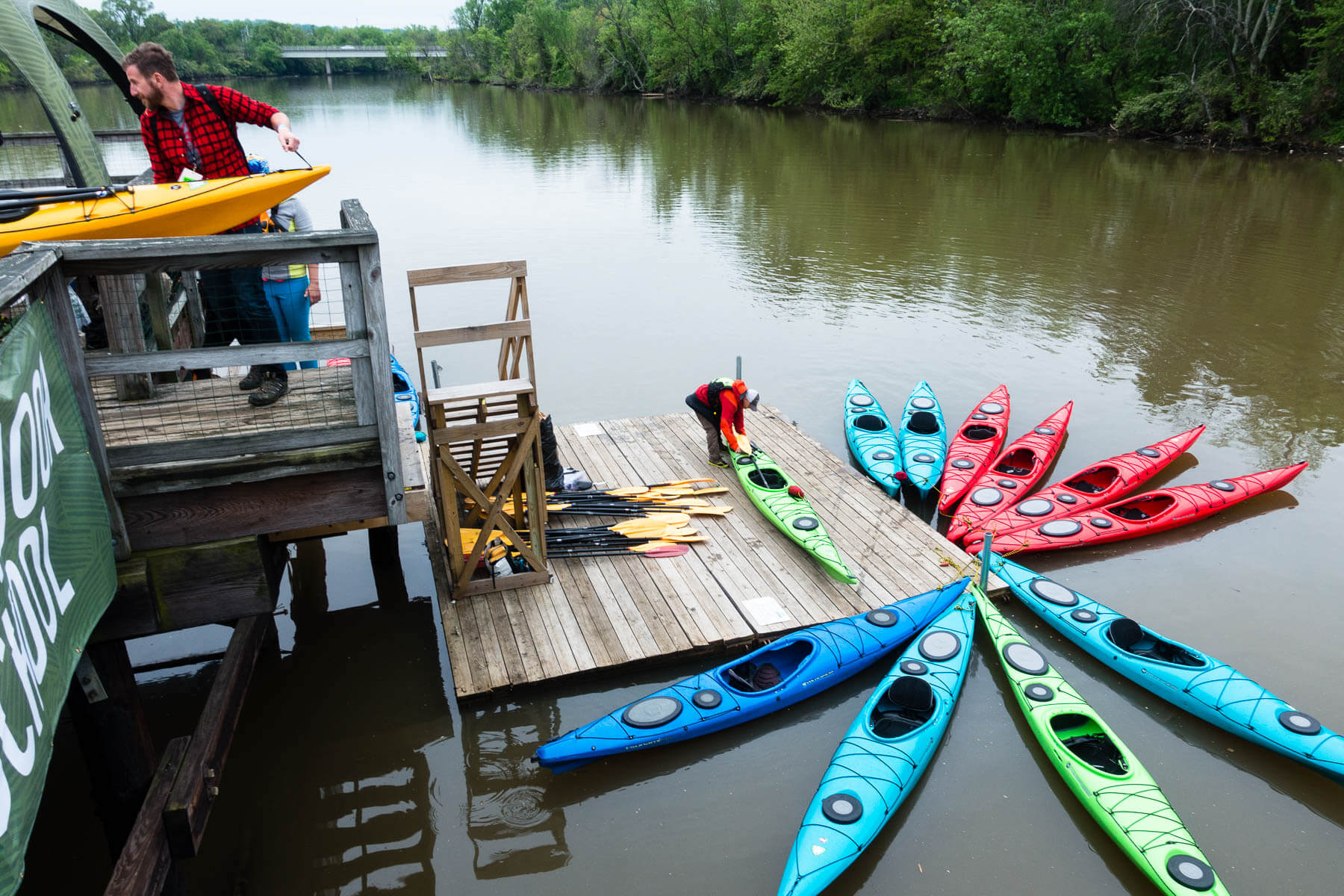 Kingman Island gained a canoe and kayak dock for public access to the Anacostia River in 2015. (Photo by Will Parson/Chesapeake Bay Program)
Kingman Island gained a canoe and kayak dock for public access to the Anacostia River in 2015. (Photo by Will Parson/Chesapeake Bay Program)
Early European settlers extensively deforested the land surrounding the Anacostia to create farmland. The deforestation led to significant erosion, causing the Anacostia River to become filled with silt and sediment. In 1898, the Army Corps of Engineers began a dredging project to deepen the channel to allow commercial boats through. The dredged material was gathered to form Kingman and Heritage Islands.
Today, Kingman and Heritage Islands are owned by the District of Columbia and managed by Living Classrooms, an organization that promotes environmental and experiential learning—particularly for underserved communities. The islands are destinations for biking, boating, fishing and hiking. They also support wildlife habitat, and are home (at least part of the year) to over 100 species of birds. Kingman Island is also home to the annual Bluegrass & Folk Festival.
Navy Yard
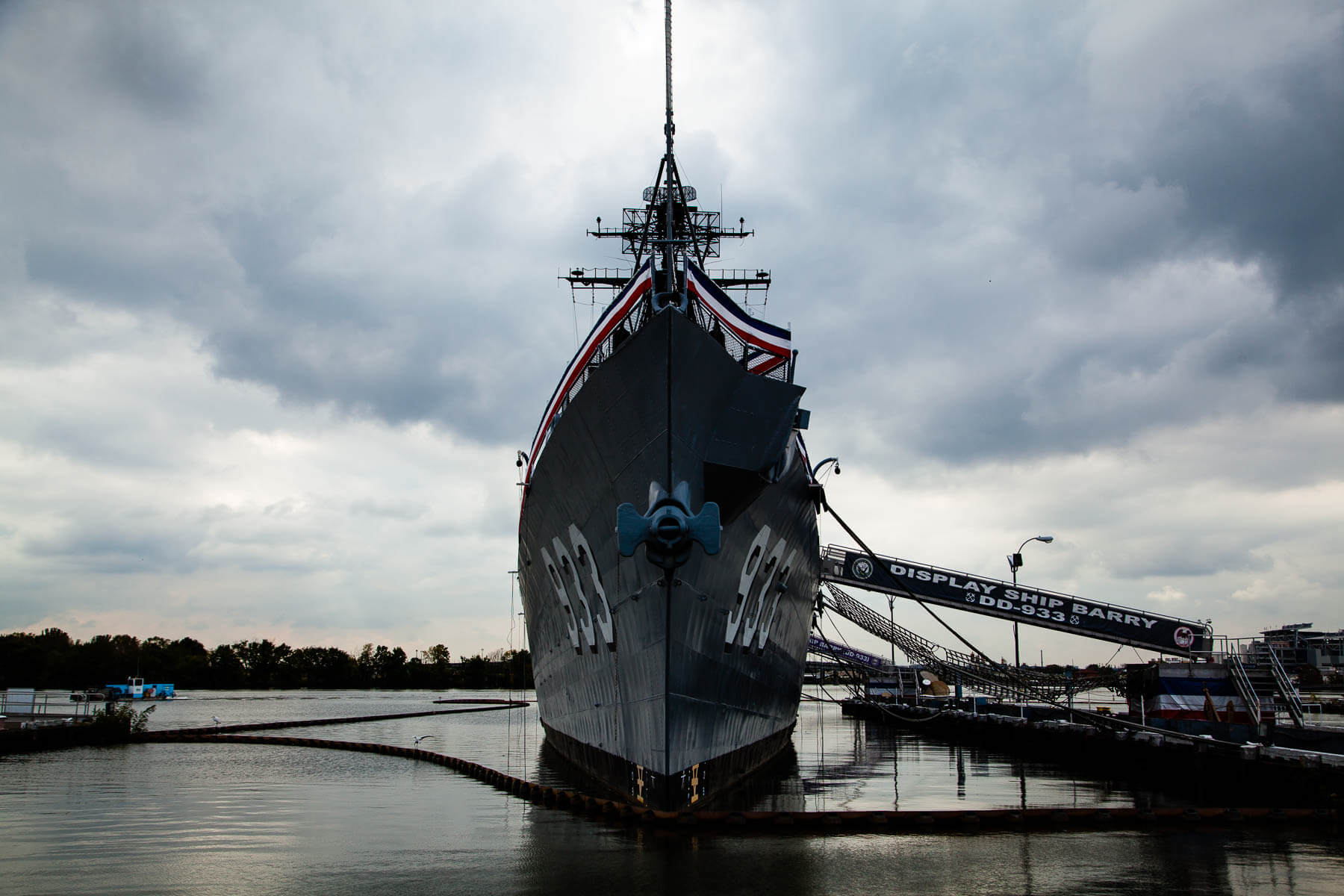 The USS Barry sits docked at the Washington Navy Yard, with egrets, cormorants and a bald eagle perched within yards of the ship. (Photo by Will Parson/Chesapeake Bay Program)
The USS Barry sits docked at the Washington Navy Yard, with egrets, cormorants and a bald eagle perched within yards of the ship. (Photo by Will Parson/Chesapeake Bay Program)
This busy and beautiful neighborhood in southeast Washington, D.C. is home to restaurants, shops, parks and the Washington Nationals ballpark—a sustainable stadium. Visitors can rent kayaks or stand-up paddleboards, run or bike along the Anacostia Riverwalk Trail or simply enjoy sitting along the river and appreciating the views.
Navy Yard is a popular location for events on the river. On Friday evenings, Anacostia Riverkeeper offers free catch and release fishing at the Diamond Teague Park. The Ballpark Boathouse offers a Twilight Tour on kayaks that highlights the history of the Anacostia. You can also attend the annual free concert series, which takes place in Yards Park every Friday night throughout the summer.
Anacostia Park
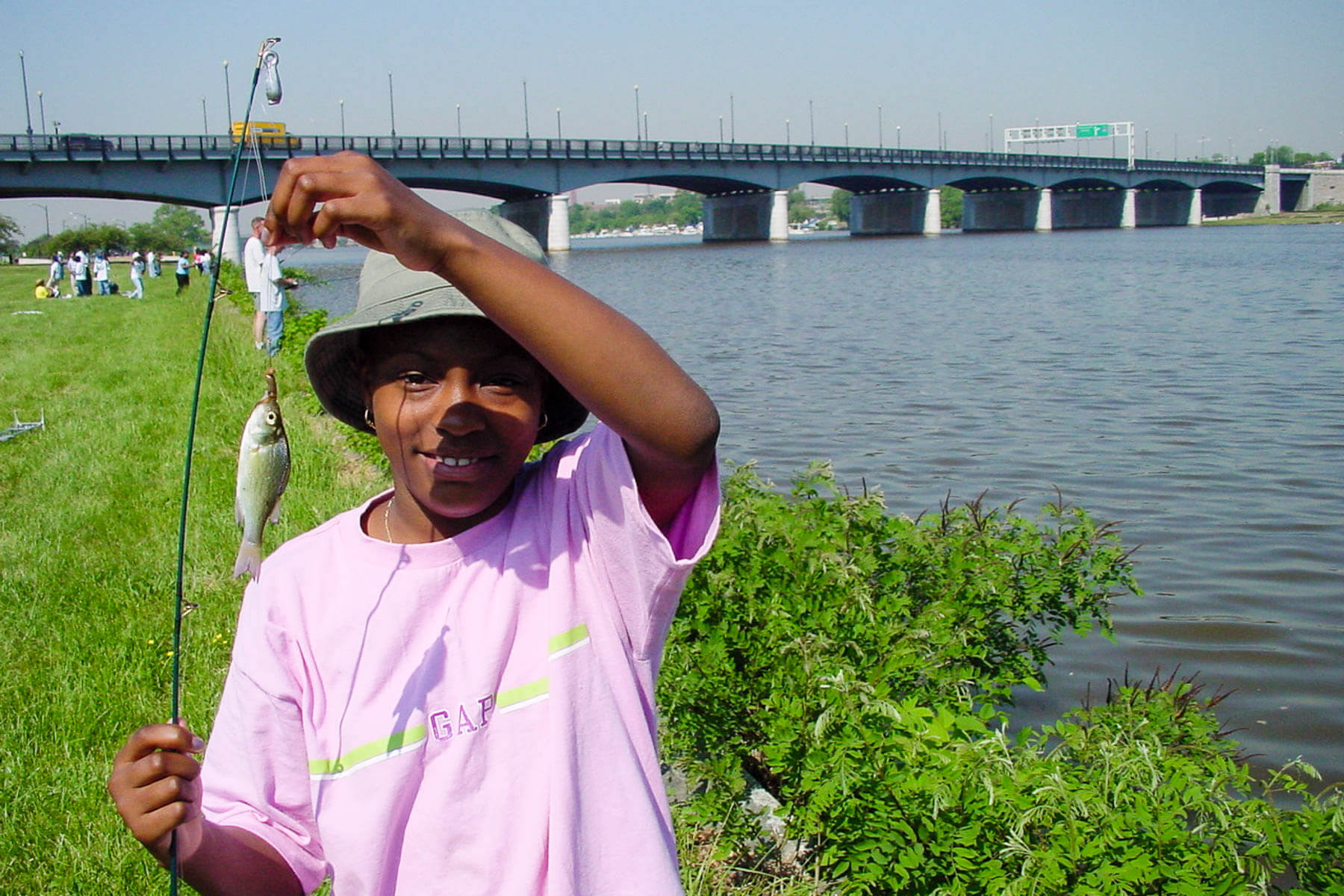 Adults and children fish from the Anacostia River near John Phillip Sousa Bridge in Washington, D.C. (Photo by Chesapeake Bay Program)
Adults and children fish from the Anacostia River near John Phillip Sousa Bridge in Washington, D.C. (Photo by Chesapeake Bay Program)
Anacostia Park, located right along the eastern shore of the Anacostia River, was preserved by Congress in 1918. 100 years later, it’s a place for visitors to hike or bike along the Anacostia River Trail, relax by the water, go boating or play on playgrounds and athletic fields.
Historically, the park was a wetland habitat. Unfortunately, the benefits of wetlands were not understood until more recently, and the Army Corps of Engineers undertook a project to fill in the wetlands in the early 20th century. Today, the National Park Service is working to restore these tidal wetlands and promote a healthier Anacostia ecosystem.
What’s your favorite spot along the Anacostia River? Tell us in the comments!

Comments
The Anacostia was overlooked for many years (earlier the Potomac was ill-treated as well. But or at least the last 20 years its restoration has gotten a great deal of attention from ELA, the DC government, and Maryland. That attention is resulting in a cleaner river and opportunities for the community to enjoy it for recreation, nature study, and fishing. When I was in EPA’s Office of Water, I attended 2 press events there to bring attention to the needs of the Anacostia and new cleanup efforts.hlad to see there is progress to celebrate
Thank you!
Your comment has been received. Before it can be published, the comment will be reviewed by our team to ensure it adheres with our rules of engagement.
Back to recent stories